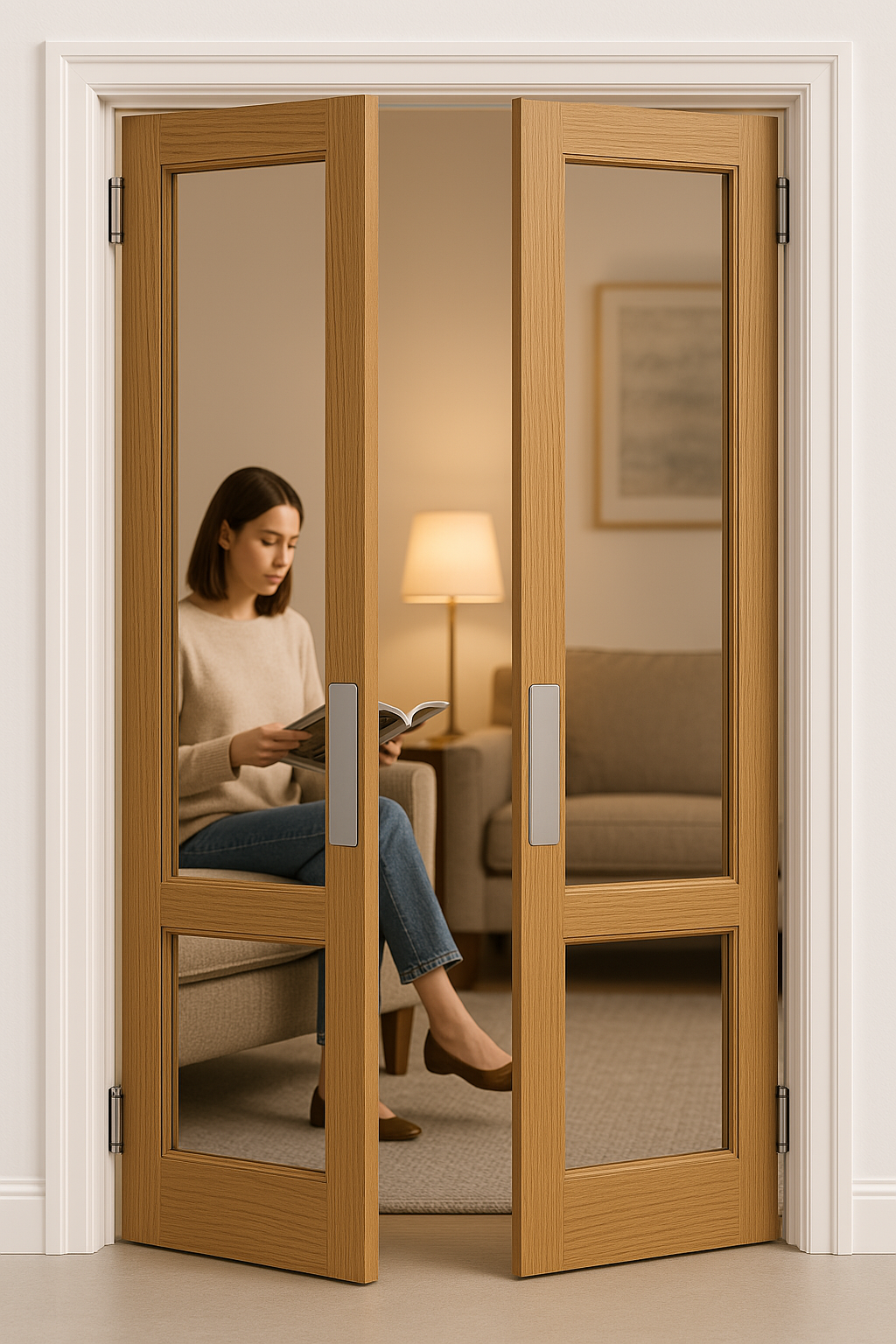
The Timeless Charm of Swinging Doors: From Tradition to Modern Home Design
The Timeless Charm of Swinging Doors: From Tradition to Modern Home Design
Swinging doors, often synonymous with the friskiness of a saloon in a Western movie, are not just a relic of the past; they’re making a boisterous return in modern interior design. For history buffs, home decor enthusiasts, and the average homeowner, these unique portals hold cultural significance and practical appeal.
Join us for a swing through time as we explore the origin of these dynamic doors, their place in various cultures, and how you can revitalize your living space by simply letting them do what they do best—swing!
The Beginnings and Evolution of Swinging Doors
Legend has it that the first swinging doors were barn doors in rural America, designed for ease of passage while keeping critters from wandering indoors. Over time, this practical innovation seeped into the bars and eateries of the Old West, where it became a quintessential fixture. But swinging doors are not just a feature of American lore.
Across the Globe: Variants of swinging doors have been a part of cultural rituals and domestic architecture for centuries. In feudal Japan, for example, shoji and fusuma, types of sliding doors, served similar roles in facilitating movement and division of space.
Cultural Significance: These doors often signify boundaries and transitions, both physical and spiritual. They are not merely functional but imbued with cultural meaning, from the saloon’s "come and go as you please" philosophy to the sacred gates of temples.
The Role of Swinging Doors in Different Cultures
Swinging doors take on a variety of roles and forms depending on the cultural context. In the Middle East, ornate splayed doors reflect Moorish and Islamic designs, acting as a blend of art and function. African tribes utilize swinging doors in huts for privacy and security, as well as for significant ceremonial purposes.
Everyday Evolution: While many cultures maintain traditional swinging door designs, there is a constant exchange of styles and materials. Modern interpretations can range from minimalist glass in Scandinavian homes to colorful, beaded doors in Africa, showcasing the versatility of this design staple.
Traditional to Trendy: These cultural shifts have influenced contemporary design, with architects and interior designers often referencing historical and global door styles to add character to residential and commercial spaces.
Swinging Doors in Home Design
The love affair with swinging doors has reached the heart of modern homes, where they are celebrated for their space-saving and stylistic benefits. Particularly in kitchens, where open plan living and the retro revival have met, swinging doors offer a balance between privacy and connectivity.
Aesthetic Appeal: In-home design, swinging doors can be more than just functional; they offer an appeal that bridges the gap between vintage charm and contemporary elegance. From classic wooden doors to sleek metal frames, there is a swinging door for every décor sensibility.
Space Savers: In tight spaces or where clearance for a conventional door swing is limited, these doors pivot to provide a solution that traditional doors cannot. This adaptability makes them a smart choice for those looking to optimize their home’s layout and flow.
DIY Swinging Door Projects
Ready to add a touch of nostalgia and utility to your living space? DIY swinging doors can be a fun project that doesn’t require a carpentry master’s skill set. With the right materials and a dash of creativity, you can craft a door that is unique to you and your home.
Materials and Tools: A DIY swinging door project can be completed with relatively simple tools and materials. The key is to ensure that the door's size and weight are manageable for the hinges you choose and the space you are fitting it into.
Design Options: An advantage of creating your swinging door is the endless design possibilities. Carve out a rectangular space in your existing door to insert glass for a chic look, paint a pattern or mural on the door to make a bold statement, or fabricate a custom wood door for a truly bespoke touch.
Maintenance and Care Tips
Like any feature of your home, swinging doors require regular maintenance to keep them functioning and looking their best. The unique nature of swinging doors calls for specialized care that differs from regular hinged doors.
Hinge Considerations: The hinges of your swinging door take on a lot of weight and motion, so ensuring they are well-lubricated and aligned is critical. Regularly checking the screws and making any adjustments can prevent future issues.
Wood Care: If your swinging doors are wooden, watch for signs of wear and treat the wood as needed to prevent warping. Regular dusting and occasional polishing will keep your doors looking inviting and will maintain the wood’s integrity for years to come.
Swinging Doors in the 21st Century and Beyond

Swinging doors encapsulate a tangible connection to our heritage and a future that values adaptable, multi-functional spaces. From their cultural origins to their place in contemporary design, these doors speak volumes about our needs and desires, both in the home and beyond.
The Future of Door Design: The swinging door resurgence is part of a larger trend toward flexibility and architectural storytelling. These pieces of living heritage are reclaiming their space in our aesthetic and functional lexicon.
Your Turn to Swing: Whether it’s a swing back to the historic or a swing into the unknown, the choice is yours with swinging doors. They offer a way to infuse your home with character, tradition, and a unique sense of style that’s both personal and universal.
Swinging doors are more than just a functional piece of architecture—they embody the stories and traditions of the cultures that have used them. In your next home design project, consider the humble swinging door for a touch of history and a nod to the practical beauty of the past.

